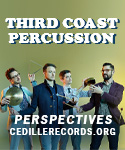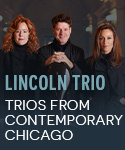Hearing this disc brought to mind the immortal words of Mussolini: “It’s not difficult to rule the Italians, it’s just pointless.” Well, here we have Bach’s marvelous organ trios (that is, works for left hand, right hand, and pedals), three lines of pure, miraculous counterpoint, rearranged for six different instrumental ensembles, very well played on period instruments by the Tempesta di Mare Chamber Players of Philadelphia. Making these arrangements was not difficult, but as Mussolini said, it is pointless.
One of the reasons we so admire these works is because they represent an apotheosis of strict, three-part writing. Well, in these performances, with a harpsichord (and lute) continuo clogging up the texture, they don’t. Then there’s the sheer virtuosity involved in a performance by a single person, and particularly the ability required to play Bach’s independent bass lines on the pedals. Say goodbye to that too. And let us not overlook the actual choice of instruments by lutenist and arranger Richard Stone, everything from two violins, cello, and lute, to piccolo recorder, two violins, cello, lute, and harpsichord.
Worst of all, quite possibly, is the arrangement of Trio No. 4 in E minor as a work in D minor for lute and harpsichord, a combination that Bach would have viewed as nonsensical, and one that inevitably turns a trio into a duo. But then, he wasn’t a professional lutenist, unlike Richard Stone. Compare this version to what Bach actually wrote (samples below). Sound ridiculous? And having decided to opt for all sorts of stylistically inappropriate instrumental combinations, why even bother to play on period instruments, as though that fact alone offers some guarantee of “authenticity”?
These are very talented players, no question about it, and anyone interested in this curiosity doubtless will not be disappointed in the performances as such, but surely the group has better things to do with their time (and ours). Yes, it’s true that Bach took some of these movements from other works, and then re-borrowed some of the trio versions later, but those arrangements are valuable for what they reveal of Bach’s compositional genius. What do these transcriptions reveal? Not Bach’s genius, nor anyone else’s. That’s for sure.
[Interested in reviews with sound clips and helpful musical comparisons? Consider becoming a ClassicsToday Insider for only $49 per year. Click on the marquee to the right for more samples and information on how to sign up.]
































